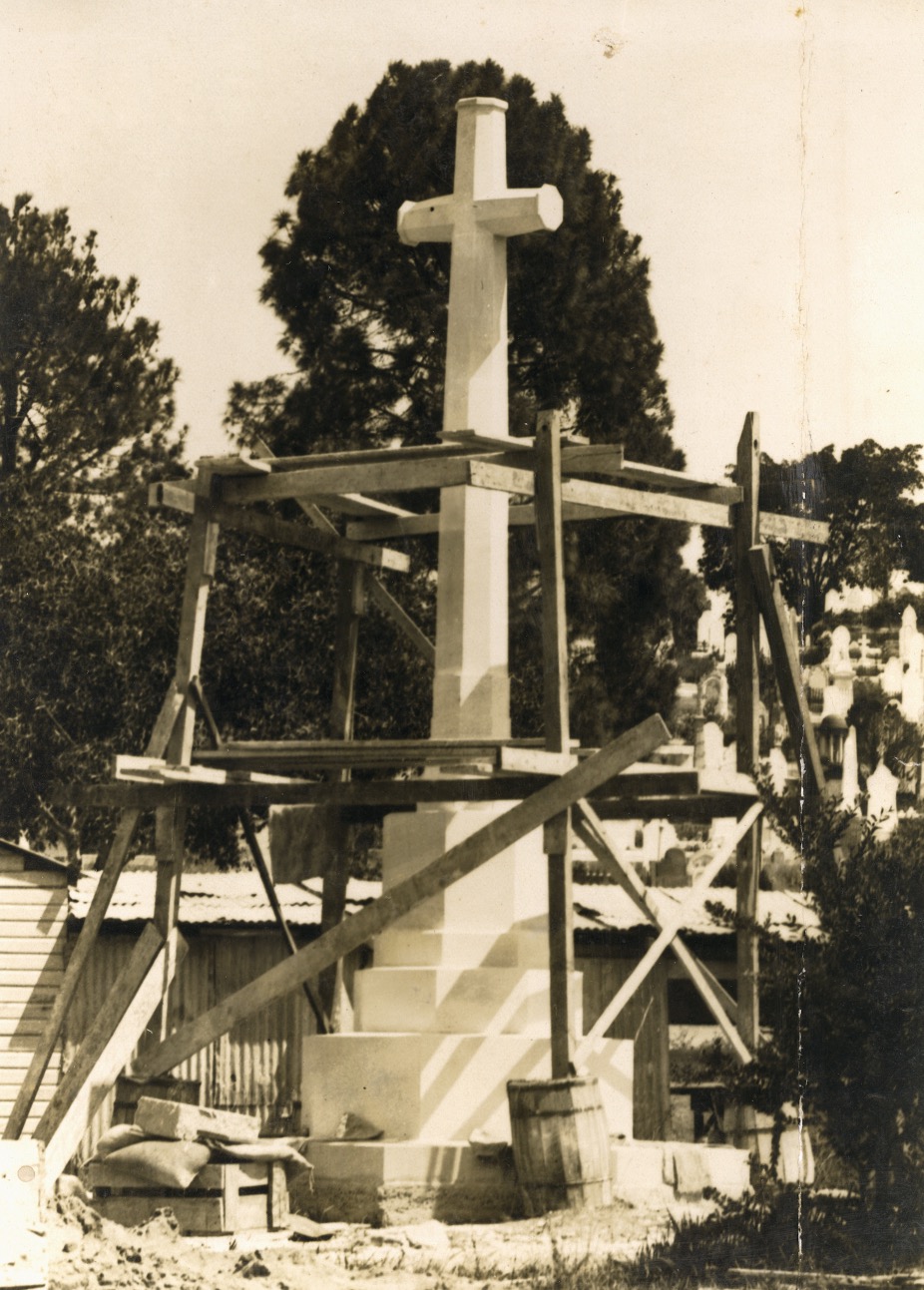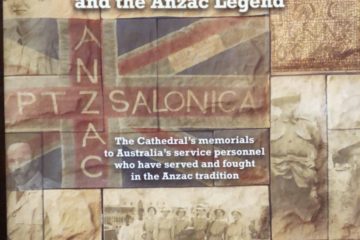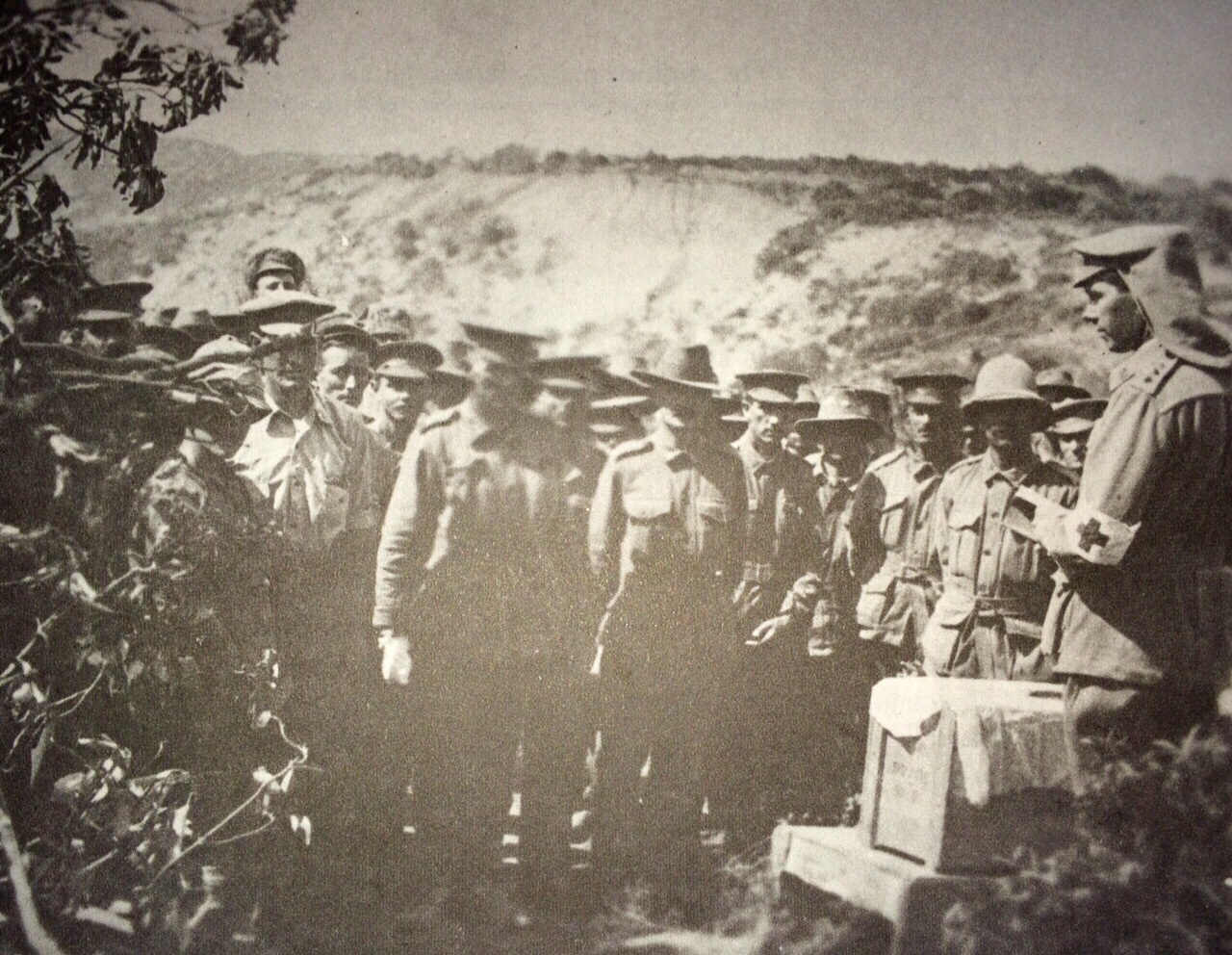ANZAC Day No. 8

ABOVE: Toowong Cemetery’s Cross of Sacrifice, under construction, a mere seven months after the decision of the Anzac Day Commemoration Committee to begin planning in late 1923. The associated nine-tonne Stone of Remembrance was hewn at Helidon, Queensland, and carted to Toowong within the same timeframe. On Anzac Day 1924 some 3,000 returned service personnel and the friends and families of The Fallen came to see both war memorials officially unveiled by Australia’s Governor-General, Lord Forster. A State Library of Queensland Collection image.
ANZAC DAY.
OBSERVANCE MORE GENERAL.
PREMIERS’ CONFERENCE DECISION.
THE seventh [ sic ] observance of Anzac Day had been better than on any previous occasion and the feeling of the people had been more intense while the method of celebration had become crystallised said Canon D.J. Garland [ David John Garland ] (one of the joint secretaries) in submitting a report to the Anzac Day Celebration Committee on Tuesday.
The occasion was a meeting of the Anzac Day Commemoration Committee which was held in the Chief Secretary’s office, the Minister for Lands (Mr J.H. Coyne) [ John Harry Coyne ] in the chair.
The report stated that the observance of the day had been even more general than in previous years, and reports from very many country centres showed that they continued to be in no way behind the metropolis in the unanimity of the public observance.
“We have heard of no serious departure from the programme in any part of the State,” the report went on.
“We therefore again submit that an observance which meets with such whole-hearted support from every section of the community, both religious and political, could well be adopted as a model for the celebration throughout the Commonwealth.”
Churches were filled to overflowing for the morning service, the large attendance of returned soldiers being especially noticeable, the cemetery services were well attended, but unfortunately owing to the weather, the supply of flowers was less than usual.
The evening meetings were again attended by large and sympathetic audiences who passed uniform resolutions and followed the programme submitted by the Committee.
SOLEMNITY OF THE CELEBRATION.
In presenting the report, Canon Garland referred especially to the solemnity of the celebration.
As showing the spirit which had grown up, he mentioned that a picture show proprietor had apologised regretting his omission to make suitable arrangements owing to forgetfulness.
Captain Pike [ Eustace Royston Baum Pike ], who had recently returned from a visit to the North, had found that even in the smallest town and most distant parts of the State, the observance was faithfully carried out.
The reversion of feeling in Cairns was particularly noticeable.
Some two years ago exception was taken by the Committee to the holding of sports in that town and now even the picture shows were entirely closed on April 25.
“AUSTRALIA’S NATIONAL DAY.”
It was decided to communicate with the Prime Minister and the State Premier conveying to them the satisfaction of the Committee and their hearty welcome of the spirit which had prompted the adoption by the Premiers’ Conference of the motions regarding the observance of Anzac Day throughout the Commonwealth as Australia’s national day.
It was decided to place on record the thanks of the Committee to the Premier (Mr Theodore) [ Edward Granville Theodore ] and the Minister for Works (Mr W. Forgan Smith) [ William (“Bill”) Forgan Smith ] for then activities in keeping the Queensland method of observance before the conference, and for their share in the satisfactory result.
A hope was expressed that the Queensland feature of addresses in the schools on the day prior to Anzac Day, and combined evening meetings on the day itself, would eventually be adopted throughout the Commonwealth.
A CROSS OF SACRIFICE.
The Committee expressed general approval of a suggestion to erect a Cross of Sacrifice and Stone of Remembrance in Toowong Cemetery to be a copy of those placed in the cemetery in France’s Terlincthun British Cemetery, Wimille.
A sub-committee was appointed to deal with the matter.
The chairman referred to the remarks made by the Archbishop of Brisbane (Dr Sharp) [ Gerald Sharp ] in his recent address to Synod, and said that he was desired by the Premier, on behalf of the Government to thank Archbishop Sharp for his kindly reference, to the Government’s action.
— from page 8 of “The Brisbane Courier” of 21 June 1923.


